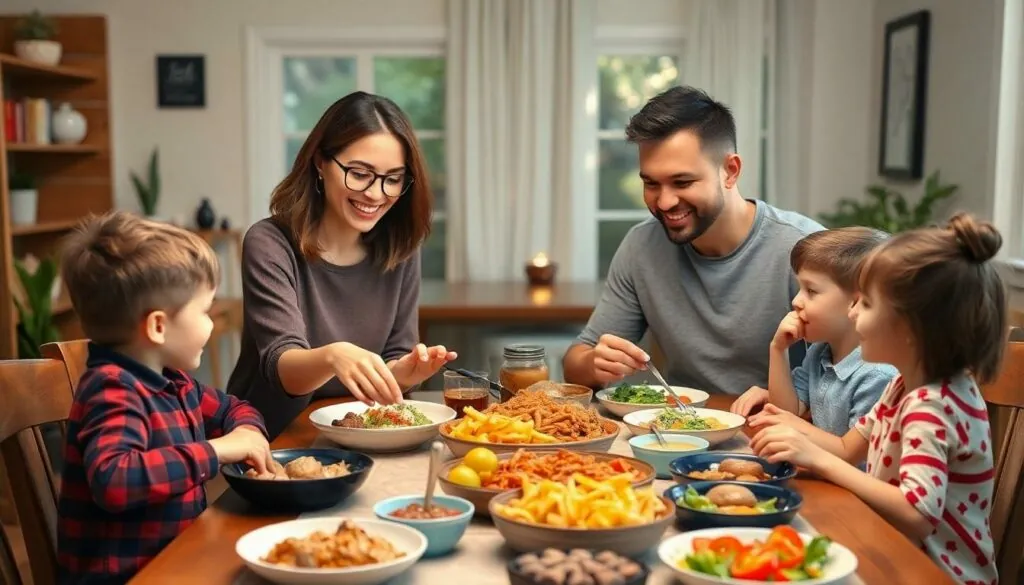Table of Contents
ToggleNavigating the world of blended families can feel like trying to solve a Rubik’s Cube blindfolded. With different parenting styles clashing like a sitcom episode, it’s easy to feel overwhelmed. But don’t worry—understanding these diverse approaches can turn potential chaos into harmony.
Imagine a family dinner where one parent insists on broccoli while the other believes pizza is a food group. It’s a recipe for disaster—or a chance to blend traditions and create something deliciously unique. By embracing the quirks of each parenting style, families can foster an environment where everyone feels valued and understood. So, let’s dive into the art of balancing these styles and discover how to turn those parenting differences into a winning strategy for a happy blended family.
Understanding Blended Families
Blended families consist of parents and children from previous relationships coming together. These family structures often present unique challenges and dynamics that require careful navigation. They involve various backgrounds and experiences, influencing parenting styles and expectations.
Parents in blended families face the challenge of merging differing philosophies on discipline and nurturing. Each parent’s approach may stem from childhood experiences or personal beliefs. Differences in parenting can create tension, as children might feel torn between contrasting expectations.
Communication is vital in these families. Open discussions about parenting styles can help establish a cohesive strategy. It’s essential for parents to express their expectations and agree on how to implement them consistently across all children.
Support from extended family members also plays a crucial role. Involvement from grandparents, aunts, and uncles can provide additional stability. Their insights can help parents understand children’s needs while promoting family unity.
Conflict resolution strategies are important in blended families. Identifying common goals can guide parents toward effective solutions when disagreements arise. Finding common ground on parenting issues often fosters a sense of teamwork.
Flexibility becomes necessary as families adapt to new dynamics. Children may need time to adjust to these changes. Creating a nurturing atmosphere encourages openness and acceptance among family members.
Acceptance of diverse parenting styles enriches the family experience. It introduces children to different perspectives, fostering empathy and adaptability. Blended families have the potential to thrive by embracing their uniqueness.
Common Parenting Styles
Recognizing various parenting styles helps blended families navigate their dynamics. Understanding these styles promotes harmony among family members.
Authoritative Parenting
Authoritative parents set clear standards while showing warmth and support. They blend discipline with open communication, encouraging children to express themselves. This style fosters independence and self-regulation, leading to responsible decision-making in children. Research shows that children raised by authoritative parents tend to develop stronger social skills, higher self-esteem, and better academic performance. Blended families utilizing this approach can provide balance, helping children adapt to new family structures.
Permissive Parenting
Permissive parents prioritize their child’s happiness over setting boundaries. They often avoid enforcing rules, resulting in an environment filled with leniency. Children raised under permissive parenting may struggle with self-discipline and authority. While this style promotes creativity and independence, it can lead to issues with responsibility and decision-making in the long run. Blended families adopting this style must strike a balance by incorporating some structure to foster a well-rounded upbringing.
Uninvolved Parenting
Uninvolved parents display minimal emotional engagement and supervision. They may prioritize other aspects of life, leaving children without guidance or support. This style often results in children feeling neglected, leading to challenges in emotional and social development. Studies indicate that children with uninvolved parents tend to face difficulties in forming relationships and achieving academic success. Blended families must be cautious about this style, ensuring that all children feel valued and supported to foster a healthy family environment.
Challenges of Different Parenting Styles in Blended Families
Navigating blended families often involves overcoming various challenges that stem from differing parenting styles. These challenges can significantly impact family dynamics.
Communication Gaps
Communication gaps can arise when parents adopt different approaches to discipline and nurturing. Parents might prioritize various values, leading to misunderstandings. Such gaps may cause confusion for children, who may struggle to align their behavior with contrasting expectations. Establishing open channels for discussion is essential to bridge these gaps. Regular family meetings can also facilitate transparency. Encouraging honest conversations creates an environment where all family members feel valued and heard. Clarifying guidelines helps children understand the family’s collective objectives.
Conflict Between Parent Figures
Conflicts often surface between parent figures due to diverging philosophies on child-rearing. Divergent methods can lead to disagreements on rules and consequences, complicating daily life. Each parent figure may feel strongly about their views, leading to tension. Seeking common ground is crucial for preventing disruptions in family harmony. Jointly discussing strategies can unite parents and foster a cohesive plan. Encouragement to respect each other’s viewpoints promotes mutual understanding. Compromise plays a vital role in addressing these conflicts, enabling families to adapt to diverse parenting styles while maintaining unity.
Strategies for Harmonizing Parenting Styles
Navigating parenting styles in a blended family requires intentional strategies. These approaches foster unity and understanding.
Establishing Common Goals
Establishing common goals is fundamental for cohesive family dynamics. Parents should regularly align their objectives for their children, focusing on shared values like respect or responsibility. Creating a mission statement that reflects these goals helps everyone stay on the same page. Referencing the family vision during decision-making reinforces commitment. When parents understand their unified purpose, children feel more secure, minimizing conflicts over differing values and expectations.
Open and Honest Communication
Open and honest communication ensures clarity and connection. Setting aside time for regular family meetings allows everyone to express concerns or insights. Encourage all family members to share their feelings without fear of criticism. Emphasizing active listening leads to better understanding of each other’s perspectives. When parents openly discuss evolving parenting philosophies, they model healthy communication for their children, ultimately creating a more harmonious household.
Seeking Professional Guidance
Professional guidance can offer valuable support in blended families. Family therapists provide targeted strategies for blending diverse parenting styles, helping parents communicate effectively. Engaging in sessions allows for tailored approaches to unique family dynamics. Additionally, educational workshops can enhance conflict-resolution skills, guiding parents towards healthier interactions. Utilizing external resources reinforces commitment to collective growth and harmony within the family unit.
Benefits of Embracing Diverse Parenting Approaches
Embracing diverse parenting approaches strengthens family bonds. Exposure to varied methods allows children to learn adaptability, fostering resilience as they navigate different perspectives. Each parenting style contributes unique strengths, enriching children’s overall upbringing and understanding of the world.
Harmonizing parenting philosophies encourages open dialogue among family members. Transparent communication fosters trust and respect, creating a safe space for children to express their feelings, beliefs, and ideas. Collaborative discussions help clarify expectations, reducing confusion that often arises from contrasting styles.
Flexibility within a blended family enhances its overall dynamics. Parents practicing adaptability show children the importance of compromise. Acknowledging differences promotes empathy, helping children appreciate various viewpoints, which is essential in personal development and social interactions.
Diverse approaches also present a balanced environment where children can thrive. Exposure to multiple viewpoints offers lessons on conflict resolution and critical thinking. These skills become invaluable as children grow into adulthood, preparing them to tackle real-life challenges with confidence.
Finally, embracing diverse parenting styles aligns with the family’s collective goals. Establishing common values supports cohesive family dynamics, essential for a blended unit. Regular family meetings to discuss issues or celebrate successes solidify relationships and reinforce commitment to shared objectives.
Conclusion
Navigating the complexities of blended families requires patience and understanding. By embracing different parenting styles and fostering open communication, families can create a nurturing environment for all members. Establishing common goals and regularly discussing approaches helps align expectations and reduces conflict.
Flexibility is key as families adapt to new dynamics, allowing everyone to grow together. With commitment to mutual respect and compromise, blended families can thrive, turning their unique challenges into opportunities for deeper connections. Ultimately, celebrating the diversity of parenting styles enriches family life and equips children with valuable life skills.








